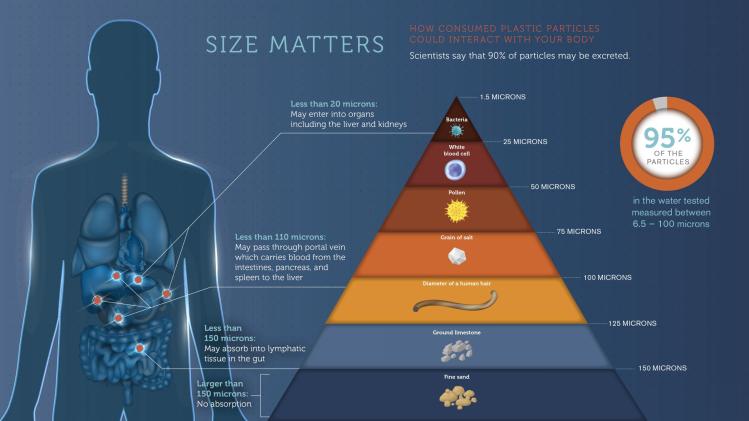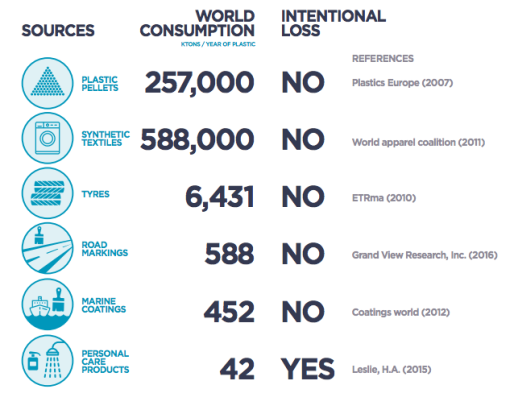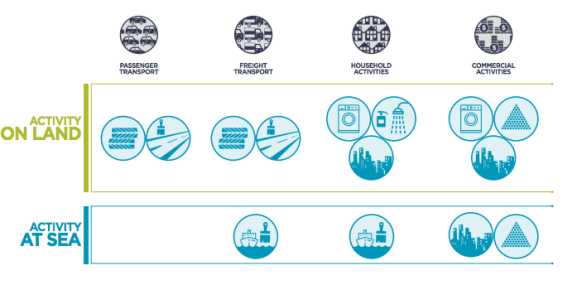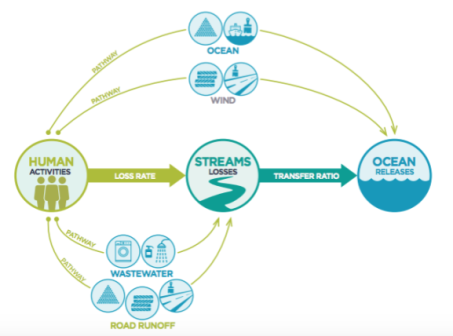A rant on plastic pollution.
Context: I worked on a plastic pollution related business for several months. We identified microfibres as being one of the leading causes of micro plastic plastic pollution in water systems so focused our research and energy on a filtration product based solution for various industries. I have since left this business but I spend a significant amount of my time on this issue so I have some thoughts, or complaints maybe.
*Before you go any farther, this is disjointed and varies from weird inconsistently formatted sourced info to info that I am just aware of from the months of plastic research and years of being an environmentalist. I can send you journals/articles, actually an entire literature review dated to the end of 2017 but I just have no motivation to blog properly right now.*
For any issue, movement, plan, whatever. There are the people that have done their research to agree or disagree, and the people that follow one of these opinions. Due to the lack of holistic understanding of the problem, the followers of the movement turn the decision into a yes or no, or somehow simplify the solutions and outcomes. With research and understanding, the answer isn’t usually so simple, and neither are the solutions.
I have been confronted with this time and time again. The more you know the less you know, right?
Sometimes bite sized changes in our daily life make a movement as daunting as eliminating plastic pollution seem more approachable. But we can’t stop here.
Here is an example that opened my eyes. Microbeads, the small microplastic fragments found in skin care products marketed for exfoliation, have been banned in various countries now. The topic of microbeads took off in environmental and skin care circles, many people critical of the completely foreseeable impact of microbeads entering water systems. This movement excited me too, I mean, it was pretty weird we were scrubbing our bodies and teeth with plastic. I looked forward to more public, industry, and government level action against microplastics. But we became complacent and satisfied with the attack on microbeads, while microfibres, the microscopic threads that our synthetic clothing is made of, make up 94% of microplastic debris in the Atlantic Ocean (Kanhai et al, 2017).
Where is the industry and government action? Only a few of the large, influential industry actors like Patagonia have made strong statements and support solutions (while they continue to be a part of the problem). I understand it would be more complicated for government to regulate microfibres in the textile industry than it was for microbead mitigation in the skincare industry. Banning synthetics outright would raise the prices of textiles at the consumer level which would make a basic need in life inaccessible, and the current supply of natural alternatives would not be able to meet current demand at short notice without causing major strain to the environment (in other ways than synthetics). Synthetics play important roles in other industries as well, like medical devices/materials.
But I’m not asking for a straight ban, like what worked for microbeads, and regulations aren’t the only option either. Subsidizing transitional actions, or stronger support for entrepreneurial industry solutions would be a start. Filter technologies for catching the released fibres, and material coating methods for mitigating the release area few options here. Waste water treatment plants (WWTP) could be retrofitted to catch a higher rate of the released fibres. About 40 % of microfibers make their way through sewage treatment plants into our rivers, lakes and, eventually, the ocean. Even WWTP with a high rate of capture contribute to the problem; the material caught at WWTP is referred to as sludge that is sometimes re-used as fertilizer on agricultural fields, which then enters waterways through run-off after rain/snow.
There are various sources of plastic pollution. Maybe I should have mentioned, microplastics (plastic particles less than 5 mm in size) worry me the most because they are hidden from our daily lives and are the hardest to remove from the environment. Large plastics can break down over time from UV exposure and oxidation and become microplastics. A report by the IUCN, ‘Primary Primary Microplastics in the Oceans : A Global Evaluation of Sources’ lists the main microplastic sources as synthetic textiles, tires, city dust, marine coatings, road markings, personal care products, and plastic pellets.
We eat things that eat plastic, or sometimes we just eat/drink the plastic, and we also breath the plastic. The global average for tap water contaminated by microplastics is 83% according to Orb Media research in 2017. They have been found in a variety of processed foods, such as honey and beer (Liebezeit & Liebezeit, 2013; Liebezeit & Liebezeit, 2014) We consume what the plastic absorbs from the environment. Yadda yadda.

Image from Orb Media
Microbeads were easy to remove from skincare. Straws are easy for SOME people to remove from their lives (the movement is ableist). Removing these smaller, ingrained plastics that a majority of the population doesn’t even realize are there, will be more difficult. If they are talking about microbeads, tell them about microfibres. If they are talking about plastic straws, remind them to vote. Lose all your friends. Go live in the forest.
Anyways. That’s all I want to say on the topic for now. I could go on about the industry issues with microplastics and potential threat on/off land fisheries by stunting fish growth, leading to smaller catch size/reproductive rates and well.. the fact that people aren’t going to be down for plastic filled fish. It was estimated that in the UK the annual losses are approx. 35 million pounds for fisheries and 16 million pounds to coastal tourism due to microfibre pollution (Lee, 2014). And not to mention the beverage/food industries of the world.
Instead, here are some cool diagrams on microplastic contributors and their pathways from the IUCN report I mentioned above.




